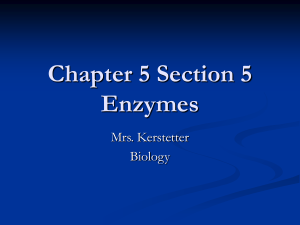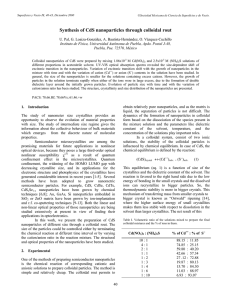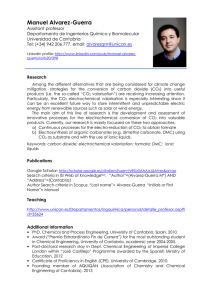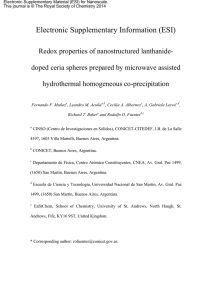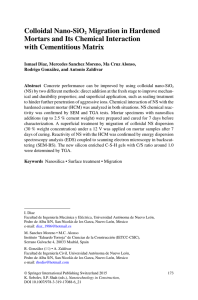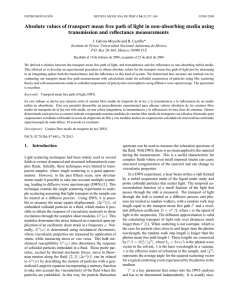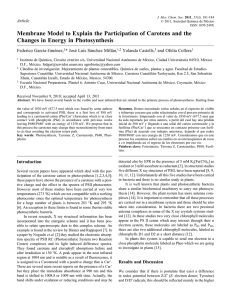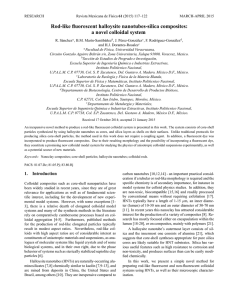Chapter VII. Future work - extensions
Anuncio
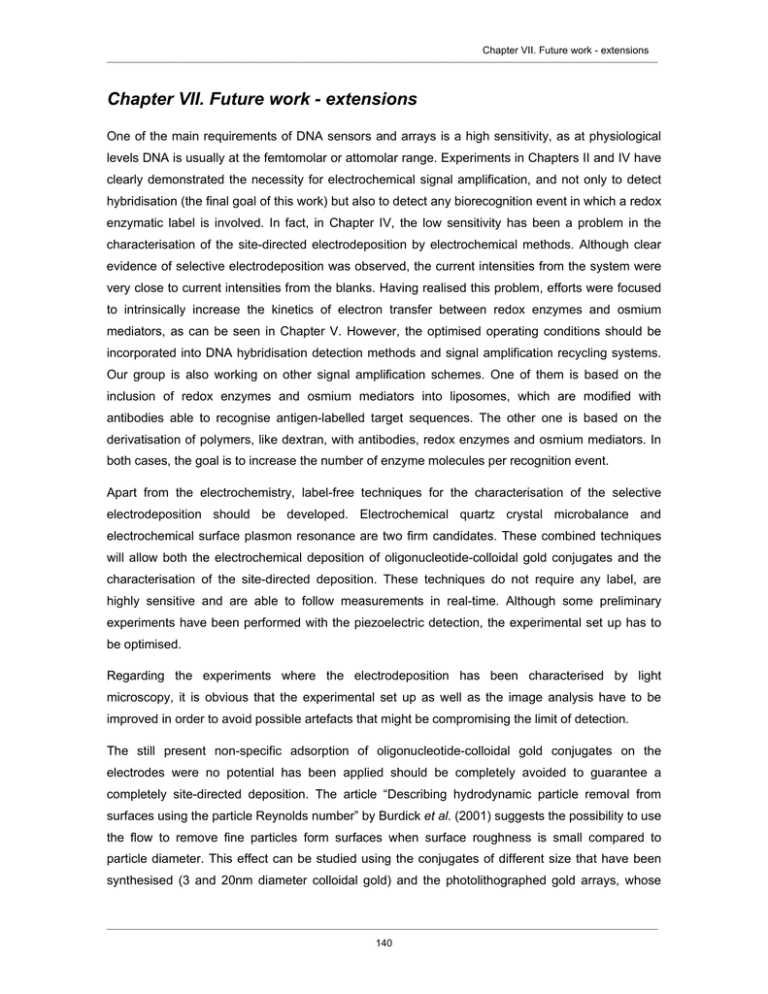
Chapter VII. Future work - extensions ______________________________________________________________________________________________________________________________________________________________ Chapter VII. Future work - extensions One of the main requirements of DNA sensors and arrays is a high sensitivity, as at physiological levels DNA is usually at the femtomolar or attomolar range. Experiments in Chapters II and IV have clearly demonstrated the necessity for electrochemical signal amplification, and not only to detect hybridisation (the final goal of this work) but also to detect any biorecognition event in which a redox enzymatic label is involved. In fact, in Chapter IV, the low sensitivity has been a problem in the characterisation of the site-directed electrodeposition by electrochemical methods. Although clear evidence of selective electrodeposition was observed, the current intensities from the system were very close to current intensities from the blanks. Having realised this problem, efforts were focused to intrinsically increase the kinetics of electron transfer between redox enzymes and osmium mediators, as can be seen in Chapter V. However, the optimised operating conditions should be incorporated into DNA hybridisation detection methods and signal amplification recycling systems. Our group is also working on other signal amplification schemes. One of them is based on the inclusion of redox enzymes and osmium mediators into liposomes, which are modified with antibodies able to recognise antigen-labelled target sequences. The other one is based on the derivatisation of polymers, like dextran, with antibodies, redox enzymes and osmium mediators. In both cases, the goal is to increase the number of enzyme molecules per recognition event. Apart from the electrochemistry, label-free techniques for the characterisation of the selective electrodeposition should be developed. Electrochemical quartz crystal microbalance and electrochemical surface plasmon resonance are two firm candidates. These combined techniques will allow both the electrochemical deposition of oligonucleotide-colloidal gold conjugates and the characterisation of the site-directed deposition. These techniques do not require any label, are highly sensitive and are able to follow measurements in real-time. Although some preliminary experiments have been performed with the piezoelectric detection, the experimental set up has to be optimised. Regarding the experiments where the electrodeposition has been characterised by light microscopy, it is obvious that the experimental set up as well as the image analysis have to be improved in order to avoid possible artefacts that might be compromising the limit of detection. The still present non-specific adsorption of oligonucleotide-colloidal gold conjugates on the electrodes were no potential has been applied should be completely avoided to guarantee a completely site-directed deposition. The article “Describing hydrodynamic particle removal from surfaces using the particle Reynolds number” by Burdick et al. (2001) suggests the possibility to use the flow to remove fine particles form surfaces when surface roughness is small compared to particle diameter. This effect can be studied using the conjugates of different size that have been synthesised (3 and 20nm diameter colloidal gold) and the photolithographed gold arrays, whose ______________________________________________________________________________________________________________________________________________________________ 140 Chapter VII. Future work - extensions ______________________________________________________________________________________________________________________________________________________________ roughness has been observed to be around 10nm from laser beam scanning experiments performed with Trace Biotech AG. Preliminary flow experiments have been performed. However, difficulties to evaluate the proper Re on the electrode surface have appeared and a new flow-cell with controlled flow should be designed. Modelling of electrodeposition of bare colloidal gold and colloidal gold conjugates is another pending task. Most of the existing models are focused on adsorption of colloidal particles, and although some other models include the presence of charged walls and the electrophoretic phenomena, none of them use oligonucleotide-modified colloidal gold particles. A simulation more close to our experimental system and including all the processes and existing forces would probably clarify the mechanisms of electrodeposition. Related to the previous pending task is the study of the kinetics of aggregation. In Chapter III, the different kinetics of aggregation have been qualitatively observed. The kinetics essentially depends on the collision frequency and the collision efficiency, being the latter difficult to quantify because it is a complex function of the diffuse layer, the Van der Waals potentials, the hydration forces and other interparticle interactions that cannot be fully accounted for. Nevertheless, a semi-empiric model could be developed in order to establish the conditions under which colloidal gold and colloidal gold conjugates suspensions are stable. Regarding the electron transfer kinetics studies, recombinant glycosylated GOx could be used to evaluate the steric accessibility of the flavin active centre. Apart from GOx, other model enzymes could also be studied. In fact, our group is working with HRP, as this redox enzyme is more commonly used in detection systems. The kinetics of dehydrogenase enzymes, able to transfer electrons and protons simultaneously, could also be studied as they intervene in many signal amplification schemes. Simulation of the interaction between enzymes and osmium mediators is also an interesting approach to visualise the dominating interactions. Finally, a hybridisation detection method should be established. In the ideal strategy, the target does not require to be labelled. This could be achieved using a sandwich format, where apart from the first immobilised probe, a second signalling probe would recognise the unpaired segment of the sequence hybridised with the first probe. This kind of format confers more selectivity to the system, as two target hybridisation steps are involved. Moreover, the mutation discrimination should be studied, as the ideal system should be able to differentiate one-point mutation. Obviously, real samples should be also used to evaluate the viability of the DNA array. Burdick G.M., Berman N.S., and Beaudoin S.P., J. Nanoparticle Res., 2001, 3, 455. ______________________________________________________________________________________________________________________________________________________________ 141
